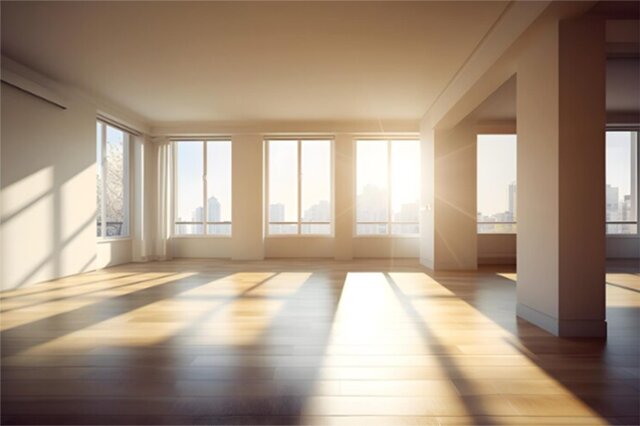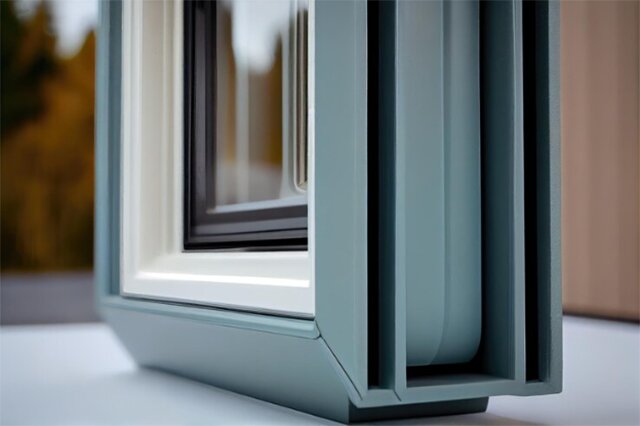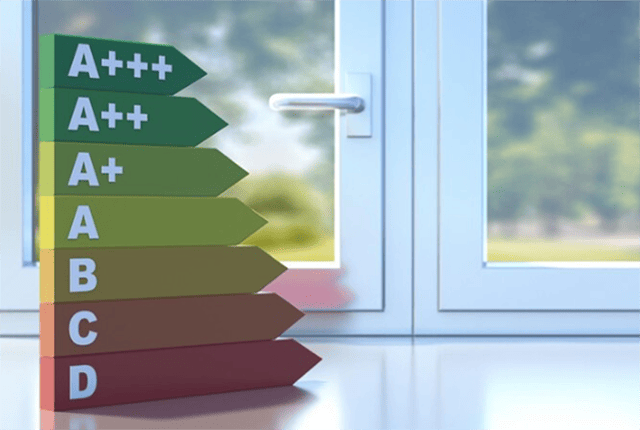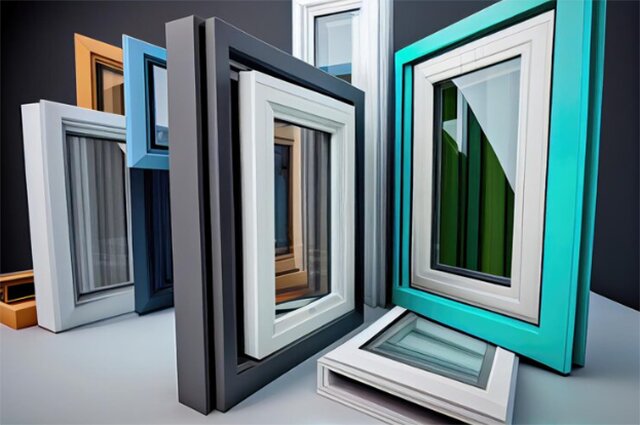Welcome to our guide on what to expect when replacing windows! We know that replacing your windows can seem like a daunting task, but it doesn’t have to be. Our comprehensive guide will walk you through the process from start to finish so you can rest assured that your new windows are installed safely and properly. We’ll cover everything from selecting the right type of window for your home, finding a qualified contractor to do the job, and how to properly maintain your new windows. So let’s get started!
Disclaimer: While this comprehensive guide on what to expect when replacing windows is provided as-is and is intended for general guidance in the replacement process, it is not a substitute for professional advice. We strongly recommend that you seek the help of qualified contractors or other industry professionals if you are planning to replace your windows. In particular, Advance Roofing LLC has been proudly serving the Spokane, WA area for many years with the highest standard of quality roofing solutions and would be happy to provide you with any consultation or assistance that you may need.
What to Consider Before Replacing Windows
Replacing windows is a significant investment for any homeowner, and it’s essential to approach the process with careful consideration. Before diving headfirst into a window replacement project, there are several key factors that you should take into account to ensure that you make the right decisions. From choosing the right window type and frame material to considering energy efficiency and installation, this comprehensive guide will cover everything you need to know about what to consider before replacing windows.
The Benefits of Window Replacement
Replacing your windows can be a significant investment for any homeowner. However, the benefits of window replacement far outweigh the costs. Not only can replacing your windows enhance the overall look and feel of your home, but it can also lead to improved energy efficiency, increased natural lighting, and increased property value. But before beginning any window replacement project, it’s advisable to consult with a professional.
Professional consultation is paramount in ensuring you make informed decisions. A professional can help you understand the best window replacements for your home and specific needs, as well as provide you with cost estimates. There are two main types of window replacements to consider: pocket replacements and full-frame replacements.
A pocket replacement involves replacing only the existing window sashes, while keeping the existing frame intact. This type of replacement is relatively cost-effective and can be completed quickly without much disruption to your home.
On the other hand, a full-frame replacement involves removing both the window sashes and the frame and replacing them entirely. This type of replacement is ideal when the existing frame is damaged or compromised. While this option can be more expensive and time-consuming, it provides a greater level of customization and a more complete upgrade.
Both pocket and full-frame replacements have their unique advantages. Pocket replacement is ideal for homeowners who want a quick and cost-effective alternative to a full-frame replacement. However, a full-frame replacement provides a greater level of flexibility, improved energy efficiency, and increased natural lighting – all of which can benefit homeowners significantly.
One of the most significant benefits of window replacement is energy efficiency. Old and damaged windows can leak air and contribute to heat transfer, causing significant energy loss and increased energy costs. Replacing your windows with energy-efficient options like triple or double pane windows with low-e glass can significantly reduce energy costs and make a significant difference in households’ indoor temperature.
Another significant benefit of window replacement is increased natural lighting. Replacing an old window with one that is larger, has more panes of glass, or is in a different style can increase natural light in your home, making it brighter and more inviting.

Types of Windows
Windows come in a variety of styles and types, from traditional double-hung windows to modern casement windows. Choosing the right type of window for your home can have a significant impact on its overall look and feel. In this section, we’ll discuss the various types of windows and their unique features to help you make an informed decision when it comes to replacing your windows.

Single-Hung Windows
Single-hung windows are a popular choice among homeowners looking to replace their windows. These windows have a classic look and feel due to their traditional design. As the name suggests, only the bottom sash of the window is operable, while the upper sash is fixed in place.
One of the advantages of single-hung windows is that they allow fresh air into a room when the bottom sash is opened. This can help to improve indoor air quality and ventilation, which is especially important during the warmer months. However, cleaning the top panel of the window can be difficult, as it cannot be opened and may require the use of a ladder.
Pivoting options are available for single-hung windows, which can make cleaning easier. This option allows the bottom sash to tilt inwards, giving you access to the outside of the window from inside your home.
Single-hung windows work well with a variety of home styles, such as Craftsman-style homes or modern farmhouses. These homes often feature clean, simple lines and a traditional aesthetic, which is complemented by the classic design of single-hung windows.
Double-Hung Windows
When it comes to replacing windows in your home, double-hung windows are a popular choice for many homeowners, especially those with traditional home styles. Double-hung windows have two operable sashes, one on the top and one on the bottom, which provides more flexibility for ventilation and cleaning. This design is considered a practical option for many households in contrast to single-hung windows that only allow the bottom sash to open.
One of the key benefits of double-hung windows is their versatility. They work well in a variety of home styles, from classic colonials to more contemporary designs. Their clean lines and traditional look make them a timeless choice that won’t go out of style. Double hung windows are also a great option for homeowners who value aesthetics just as much as practicality.
When it comes to design options, double-hung windows are available in a wide range of styles and materials. Some models even offer the option to tilt outwards, making cleaning even easier. This feature is especially helpful for homeowners who live in multi-story buildings or have limited access to the exterior of their home. Another feature that makes double-hung windows attractive is their suitability for window air conditioning units, especially during the hot summer months.
If you’re considering replacing your home’s windows, it’s important to keep double-hung windows in mind as a potential option. They offer both classic aesthetics and practical features that make them a great choice for many households. Double-hung windows also provide ample natural light, help to maintain indoor temperatures, and can even save you money on energy costs. Overall, if you’re looking for a window option that combines style and practicality, double-hung windows are definitely worth considering.

Casement Windows
When it comes to choosing the right windows for your home, you want to make sure that you consider all of your options. One type of window that provides a unique set of benefits is the casement window.
Casement windows are a type of hinged window that open from a vertical sash that is hinged on one side. They are designed to swing outward when opened and provide a wide horizontal opening that allows plenty of natural light and fresh air into your home.
One of the primary advantages of casement windows is their tight seal. When the window is closed, it creates a snug fit that helps to keep out drafts and noise. This tight seal also contributes to the overall security of these windows since they are much harder to force open from the outside.
Another benefit of casement windows is their superior ventilation capabilities. Because they open wide, they provide excellent airflow which is ideal for areas of your home that require high levels of ventilation, such as your kitchen or bathroom.
Casement windows are also known for their energy efficiency. Their tight seal helps to reduce heat transfer and prevent air leaks which can help to lower your energy costs. Additionally, many casement window models
are available with low-E glass which helps to further reduce heat transfer and solar heat gain coefficient.
Casement windows are a popular choice for a variety of locations in your home. They are often used in areas where you want an unobstructed view and plenty of natural light. This includes spaces such as living rooms, dining rooms, and bedrooms. They are also a practical choice in hard-to-reach areas or where space is limited, such as in attics or basements.
When it comes to selecting casement windows, homeowners have a variety of material and glass options to choose from. Popular materials include vinyl, wood, and aluminum, each offering their own set of benefits such as durability, energy efficiency, and aesthetics. Glass options include double-pane or triple-pane glass, which offer increased energy efficiency and noise reduction.
Overall, casement windows are an excellent choice for homeowners who value security, ventilation, energy efficiency, and practicality. With their sleek design and wide range of material and glass options, they are sure to provide both aesthetic appeal and functional benefits to any home.
Awning Windows
Awning windows are a type of window that is hinged at the top and opens outward from the bottom. This versatile design makes them an excellent choice for a variety of locations in your home.
One of the primary benefits of awning windows is how they can be used in combination with larger stationary windows. This allows for a greater amount of natural light to enter the room while maintaining privacy and security. Additionally, awning windows are designed to prevent water and outside elements from getting in even when open, which is especially important in areas where rain or snow is common.
Awning windows also provide excellent air flow and have a low air leakage rate, making them ideal for rooms that require high levels of ventilation. These windows work well in bathrooms, kitchens, and other areas that can become damp or humid.
Advanced window technology has made it possible for awning windows to provide even more benefits. Many models are now available with low-E glass which reduces the amount of UV rays that enter your home and can help lower your energy costs. However, this advanced technology does come at a higher price point compared to traditional options.
Popular Choices in Window Frames and Glass Options
When considering replacing your windows, it’s important to keep in mind the different types of window frames and glass options available to you. Your choice of window frames and glass can significantly affect the overall efficiency, look, and feel of your windows.
Window frames come in a variety of materials, including wood, vinyl, fiberglass, and aluminum. Wood frames offer a classic look but require more maintenance than other materials.
Vinyl frames are popular due to their affordability, low maintenance requirements, and overall energy efficiency.
Fiberglass frames provide durability and are able to withstand extreme weather conditions.
Aluminum frames are sleek and offer excellent structural strength but may not be the most efficient option due to high heat transfer.
When it comes to glass options, there are several popular choices available.
Low-e glass is a type of glass that has a special coating designed to reflect heat, keeping your home cooler in the summer and warmer in the winter. This can result in lower energy costs and increased comfort.
Argon-filled glass is another popular option that helps improve the overall efficiency of your windows. It is filled with argon gas, which is a non-toxic, odorless, and colorless gas that helps reduce heat transfer.
Laminated glass is also gaining popularity, especially in areas prone to severe weather conditions. This type of glass consists of a layer of plastic sandwiched between two panes of glass, providing added safety, security, and sound reduction.
When choosing the type of window frames and glass options to use on your windows, it’s important to consider various variables such as your indoor temperature, solar heat gain coefficient, and energy costs. Low-e glass and argon-filled glass are both great options for those looking to improve energy efficiency and save on costs. Additionally, when paired with energy-efficient window frames, they can maximize the overall efficiency of your windows.

Comprehensive Guide to Cost and Installation Day Preparation
Replacing windows in your home can be a significant project, requiring careful consideration and preparation. To ensure a successful window replacement project, it’s vital to have a comprehensive guide to cost and installation day preparation. From selecting the right type of window to estimating the cost and preparing your home for installation day, this guide will help you navigate the process and make informed decisions.

Average Costs for Different Window Types and Styles
Replacing windows can be a considerable investment, and the cost can vary depending on the window type, style, material, and glass type. Here, we’ll provide you with an overview of the average costs associated with different window types and styles to help you determine the right choice for your home renovation project.
There are many window types available in the market such as double-hung, single-hung, casement, awning, picture, bay, bow, arched, and slider windows.
Double-hung windows are the most popular choice, with an average cost ranging from $350 to $800 per window.
Single-hung windows are a more affordable option, with an average cost of around $175 to $350 per window.
Casement windows are particularly energy-efficient, but they tend to be a bit more expensive, with an average cost of $400 to $1000 per window.
Awning windows also tend to be more expensive due to their unique design, and they cost an average of $450 to $1000 per window.
Picture windows are designed to provide a panoramic view and can cost between $650 and $1,500.
Arched windows, bay, and bow windows are custom-built to fit specific spaces and shapes, and thus, can be quite expensive. Their average cost starts at $1000 per window and can go up to $5000 or more per window.
The cost of the material and glass type varies for each window.
Fiberglass windows cost an average of $700 to $1200 per window.
Vinyl windows are more affordable, with an average cost ranging from $300 to $900 per window.
Aluminum windows are a cheaper option, costing between $75 and $400 per window.
Wood frames can be a more expensive option, with an average cost of around $800 to $1000 per window.
Glass type is another consideration when determining the cost of window replacement.
Single-pane windows are the most basic, and hence, the most affordable option, costing around $50 to $150 per window.
Double-pane and triple-pane windows tend to be more energy-efficient, but the cost for these options ranges from $125 to $800 per window.
Low-E glass is another option for homeowners looking to reduce their energy costs.
The average cost for Low-E glass falls between $40 and $700 depending on the window size and type.
Other factors that affect the total cost of window replacement include the number of windows to replace, labor costs, installation methods, etc. Replacing multiple windows
tends to be more cost-effective, as the contractor typically offers a discount for bulk installations. The cost of labor can vary depending on the area, but it typically ranges from $50 to $100 per hour. Lastly, the selected type of installation (full-frame or pocket) also plays a role in the cost, with full-frame installations costing more than pocket installations.
In conclusion, the cost of replacing windows is determined by the window type, style, material, glass type, and installation method, among other factors. However, with a wide range of options in the market, you can find a style and material that fits your budget and design preferences.
Preparing for the Installation Day – What You Need to Know
Replacing your windows can greatly improve your home’s natural light, energy efficiency, and overall appearance. As you approach the installation day, it’s important to prepare your home and understand the services offered by the window company.
One of the first steps in preparation is to remove all furniture and items away from the windows that will be replaced. The certified technicians will need space to work safely and efficiently. Be sure to clear a path for
them to transport the old windows out of the house and the new windows into your home.
It’s also crucial to understand the services offered by the window company. Some companies only offer window installation, while others may also manufacture the windows. Working with the same company that offers both services can simplify and streamline the process, as there will be better communication and coordination between the manufacturing and installation teams.
On the scheduled installation day, certified technicians will arrive to replace the windows. They will ensure that the installation is done correctly and cleanly. The technicians will clean up the job site, removing any debris and ensuring that your home is left in good condition.
Preparing for the installation day is important to ensure a smooth and efficient window replacement process. This includes removing furniture and items away from the windows, understanding the window company services, and being ready for the arrival of the certified technicians. With appropriate preparation, your window replacement project will be a success, and you’ll experience the benefits of efficient windows for years to come.

Tips for Reducing Energy Costs Long-Term with Efficient Windows
When it comes to replacing windows, investing in energy efficient options can have a significant impact on long-term energy costs and overall comfort within the home. Energy efficient windows are designed to reduce heat transfer and improve insulation, helping to maintain indoor temperatures while reducing the need for heating and cooling.
One of the key features of energy efficient windows is Low-E glass. This type of glass is coated with a special material that reflects heat back into the room, preventing it from escaping through the window. Argon gas is another common feature of energy efficient windows, which is inserted into the space between the panes of glass to improve insulation.
In addition to investing in energy efficient windows, there are several practical tips that homeowners can follow to further reduce energy consumption. Installing weather stripping around windows and doors can help to seal gaps and prevent drafts, which can make a significant impact on energy costs over time.
Consider investing in multiple-pane windows, such as double- or triple pane options, which provide additional layers of insulation to reduce heat transfer. Homeowners should also consider the orientation of their windows when choosing new options, as south-facing windows can allow for more natural light and heat during the winter months, while west-facing windows can lead to excess heat gain during the summer months.
Overall, investing in energy efficient windows and following practical tips for reducing energy consumption can have a significant impact on long-term energy costs and comfort within the home. By incorporating features like Low-E glass and Argon gas and taking simple steps to improve insulation, homeowners can reduce their environmental impact and save money on energy bills over time.
Heat Transfer and Efficiency Ratings of Different Window Types
When replacing windows, it is important to consider factors such as energy efficiency and heat transfer. Understanding these concepts can help homeowners make informed decisions when selecting the best window types for their homes. In this comprehensive guide, we will explore the different efficiency ratings of various window types and how they can impact heat transfer within the home.

Fiberglass, Vinyl, Wood, and Aluminum Frame Comparisons
When it comes to window replacement, an important decision to make is the material for the frame. Four of the most popular options are fiberglass, vinyl, wood, and aluminum. Each material offers unique advantages and disadvantages, so it’s important to weigh the pros and cons before making a decision.
Fiberglass frames are an excellent choice for homeowners looking for high-quality durable windows. They can withstand extreme temperatures without warping or changing shape and are resistant to rot and insect damage. They also don’t require much maintenance other than occasional cleaning. Fiberglass frames are great for energy efficiency, as
they minimize heat transfer and help keep indoor temperatures consistent throughout the year.
Vinyl frames are a popular choice for those looking for affordable and low-maintenance windows. They are resistant to rot, moisture, and insect damage, and don’t require painting or staining. However, vinyl frames can be less durable than other materials if exposed to extreme temperatures for extended periods. They also have a limited range of colors and styles compared to other materials. Energy efficiency is also a strong suit for vinyl frames, as they reduce heat transfer and help keep energy costs down.
Wood frames offer a beautiful and traditional look that many homeowners find attractive. They are also highly customizable in terms of color and style, allowing for a wide range of options for
personalization. Wood frames can last a long time if well-maintained, but they are susceptible to rot, insect damage, and warping if exposed to moisture. They also require regular painting or staining to maintain their appearance. Energy efficiency is moderate for wood frames, as they can be insulated and reduce heat transfer to an extent.
Aluminum frames are known for their strength and durability, making them a popular choice for commercial buildings and high-traffic areas. They are also low-maintenance and resistant to moisture, mold, and insect damage. However, aluminum frames can conduct heat easily, making them less energy efficient than other materials. They also have a limited range of colors and styles compared to other materials.
Overall, when choosing a frame material for replacement windows, it’s important to consider factors like durability, maintenance, energy efficiency, and personal style preferences. Each option has its own strengths and weaknesses, so it’s best to do research and consult with a professional to make the best decision.
Variety of Styles Available When Replacing Your Home’s Windows
When it comes to replacing your home’s windows, you have a wide range of options to choose from. One of the most important decisions you’ll need to make is choosing the style of window that best fits your needs. Here are some of the most popular window styles available:
- Double-Hung Windows: Perhaps the most common type of window, double-hung windows are designed to slide up and down within the frame. They offer great ventilation options and are easy to clean.
- Sliding Windows: Similar to double-hung windows, sliding windows open horizontally from side to side. They are great for rooms with a wide view and are easy to operate.
- Casement Windows: Casement windows are hinged on the side and open outward. They offer great ventilation and are ideal for areas that require frequent opening and closing, such as a kitchen.
- Picture Windows: Picture windows are fixed panes of glass that offer an unobstructed view of the outdoors. They are often large and can add a lot of natural light to a room.
- Bow and Bay Windows: Bow and bay windows protrude from the exterior of the home and create an attractive, curved shape. They offer a lot of natural light and can add a unique look to the exterior of your home.
Other styles to consider include awning windows, which are hinged at the top and open outwards, arched windows, which feature a distinctive curved shape, and specialty windows such as skylights, which can add extra light and ventilation to a room.
When choosing a window style, consider the unique features and advantages each option offers. Think about the amount of ventilation, natural light, and insulation you need, as well as the overall aesthetic of your home. With so many options available, you’re sure to find the perfect style to meet your needs.

Conclusion
Replacing windows can offer numerous benefits, including increased natural light, improved energy efficiency, and a beautiful new look for your home.If you’re considering replacing your windows, take action today and start your project. With careful planning and decision-making, you can enjoy the benefits of new, efficient, and beautiful windows for years to come.



 509-201-4190
509-201-4190
